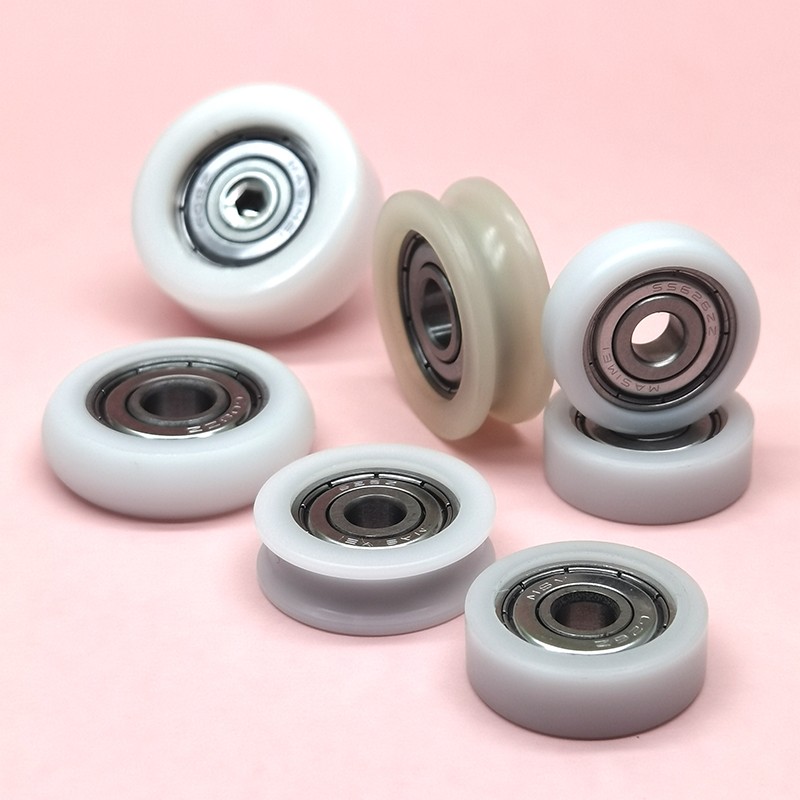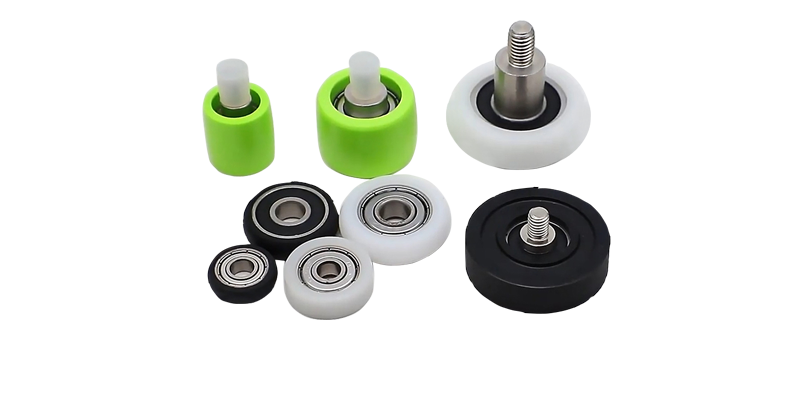86-15820855246(WhatsApp)
info@semeimachinery.com
 SEMEI Wheel Bearings : How do POM-coated rubber wheels compare to other materials?
SEMEI Wheel Bearings : How do POM-coated rubber wheels compare to other materials?POM-coated rubber wheels offer a unique combination of properties that set them apart from wheels made from other materials. Here’s how they compare to some common alternatives:

Wear Resistance: POM coating can significantly enhance the wear resistance of rubber, extending the life of the wheel compared to uncoated rubber wheels.
Friction and Rolling Resistance: The POM coating typically reduces rolling resistance, leading to smoother and quieter operation, while still providing good traction.
Chemical Resistance: POM is more resistant to chemicals and solvents than many types of rubber, making it better suited for environments where exposure to such substances is likely.
Temperature Sensitivity: Rubber can become softer at higher temperatures and stiffer in cold conditions, whereas POM maintains its properties over a wider temperature range.
Elasticity and Shock Absorption: Polyurethane is known for its excellent elasticity and shock absorption, which can be superior to POM-coated rubber in applications requiring these properties.
Abrasion Resistance: PU generally has higher abrasion resistance than POM, making it more durable in high-wear situations.
Load Capacity: Polyurethane can support heavier loads compared to POM-coated rubber, which might be more suitable for lighter applications.
Surface Finish: POM tends to have a smoother surface finish, which can result in quieter operation and less debris pickup.
Durability and Load Capacity: Metal wheels are extremely durable and can handle very heavy loads, but they are not as flexible or forgiving as POM-coated rubber.
Impact on Surfaces: Metal wheels can damage floors and surfaces more easily due to their hardness and lack of cushioning.
Noise Level: Metal wheels tend to be noisier, especially on hard surfaces, while POM-coated rubber offers a quieter ride.
Weight: Metal wheels are typically heavier, which can affect the ease of movement and portability of the equipment they're attached to.
Cost: Plastic wheels are often less expensive than POM-coated rubber wheels.
Corrosion Resistance: Plastics like nylon and polypropylene are highly resistant to corrosion, similar to POM, but may not offer the same level of impact resistance.
Flexibility: Plastic wheels are generally less flexible and can be more brittle, especially in cold environments, compared to the flexibility of POM-coated rubber.
Rolling Resistance: POM-coated rubber usually provides lower rolling resistance and a smoother ride compared to plastic wheels.
Heat and Chemical Resistance: Vulcanized rubber can offer better heat and chemical resistance than non-vulcanized rubber, but it may not match the chemical resistance of POM.
Traction: Vulcanized rubber can provide excellent traction, but the POM coating can reduce this slightly while offering improved durability and wear resistance.
Hardness: Vulcanized rubber can be harder, which affects the ride quality, while POM-coated rubber offers a balance between hardness and flexibility.
Flexibility and Durability: Elastomers, depending on the type, can offer a balance of flexibility and durability similar to POM-coated rubber but may vary in terms of specific performance characteristics like chemical resistance or wear resistance.
Environmental Resistance: Some elastomers may not perform as well in extreme temperatures or chemical environments compared to POM.
The choice between POM-coated rubber wheels and other materials depends on the specific requirements of the application. POM-coated rubber wheels excel in environments that require a balance of durability, low rolling resistance, chemical resistance, and quiet operation. They are particularly well-suited for industries that value long-term performance and minimal maintenance, such as material handling, medical equipment, and cleanroom applications. However, for applications requiring maximum load capacity, shock absorption, or cost-effectiveness, other materials like polyurethane, metal, or plastic might be more appropriate. Always consider the specific needs of your application when selecting the right wheel material.
